“Bzzzz! WOOOSH! Bam!” Sweet sounds of laughter and imaginative play ring out. As a parent, I am sure you can hear them too. As kids let their imaginations run wild and their interests take the lead on how they play, they begin to let their fantasies and pretend play dominate their day and what toys they engage with.
Sometimes it can be annoying or even seem like a really pointless way to play when there are so many other options like puzzles, gears, and games that have very obvious benefits to children and their development.
But could pretend play actually help not just help kids visualize themselves in future careers, but also boost their brain development to actually achieve those dreams?
Quite simply, yes.
Just like engaging in messy play has its lessons and advantages, the benefits of imaginative play are endless.
Why parents should never ignore pretend play and how it impacts learning
Pretend play enhances executive functioning skills
According to The Oxford Handbook of the Development of Imagination pretend play boosts executive functioning skills because through imagination, kids learn to plan ahead, have conscious control of their emotions, and even show exceptional working memory. Through their imaginations they’re learning these skills that contribute to academic success from preschool throughout high school and college.
Imagination and play-based instruction help kids to think outside of the box later in life
Kids who participate in play-based learning have shown higher scores in mathematics and other subjects according to the Journal of Research of Childhood Education. Coupled with those executive functioning skills they’ve learned, it sets kids up to push boundaries in learning and innovation.
So whether it’s building imaginative structures with blocks or creating a fictional land and telling stories about it, if we let our kids explore the depths of what they can create, it will help make their futures less bound by what they know and more dictated by what they can discover, solve, and uncover through science, technology, engineering, and math.
Related: Best STEM and STEAM books for kids
Encouraging our kids to use their imaginations helps them to learn problem solving and flexibility
Maybe a child can’t go outside to play because the weather is poor, but they can let their minds run wild while pretending inside. This is teaching our children flexibility. It’s teaching them to not be stuck inside the proverbial box. So as they learn to envision themselves doing great things or seeking amazing careers, they’re setting themselves up for a future in STEM or simply in roles that allow them to problem solve to make our world a better, brighter place.
Pretend play is more than just fun, it could be visualizing a future in STEM
When we let our kids proverbially put on someone else’s hat or walk in their shoes, they can see themselves there. They can visualize a future doing work and enjoying life like the people and careers they look up to.
This fantasy or participation in a fictional word activates new parts of the brain. It is unknown whether if it is because of acting it out with their bodies, working together with others to perform, or simply because they’re simply pretending, but what we do know is that it inspire them and helps them nonetheless.
How to invest wisely in your child’s imagination
Sometimes it’s easy to know what to buy when it comes to investing in a certain skill for your child. But maybe a little less obvious when it’s all about pretending and imagining. Here are a few ideas and recommendations to get you started. As an Amazon Affiliate, I earn from qualifying purchases.
Put together a Dress Up Station
Fill it with the tools and clothes of interesting occupations in the STEM field like being a veterinarian, astronaut, scientist, or other. Make sure kids have access to lab coats, and play tools like thermometers, beakers, and more.
- Veterinary Tools including this amazing X-Ray Kit
- Pretend Doctor Set
- Lab coat and scientist set
- Science explorer set
Grab this fun vet checklist to add even more fun to dress-up play. (My good friend Andra Weber Creative made this adorable printable for me for my daughter’s 5th birthday party. Be sure to check out her site full of creative projects for adults and kids.) To grab the checklist, simply fill out the form below and the printable will be emailed to you.
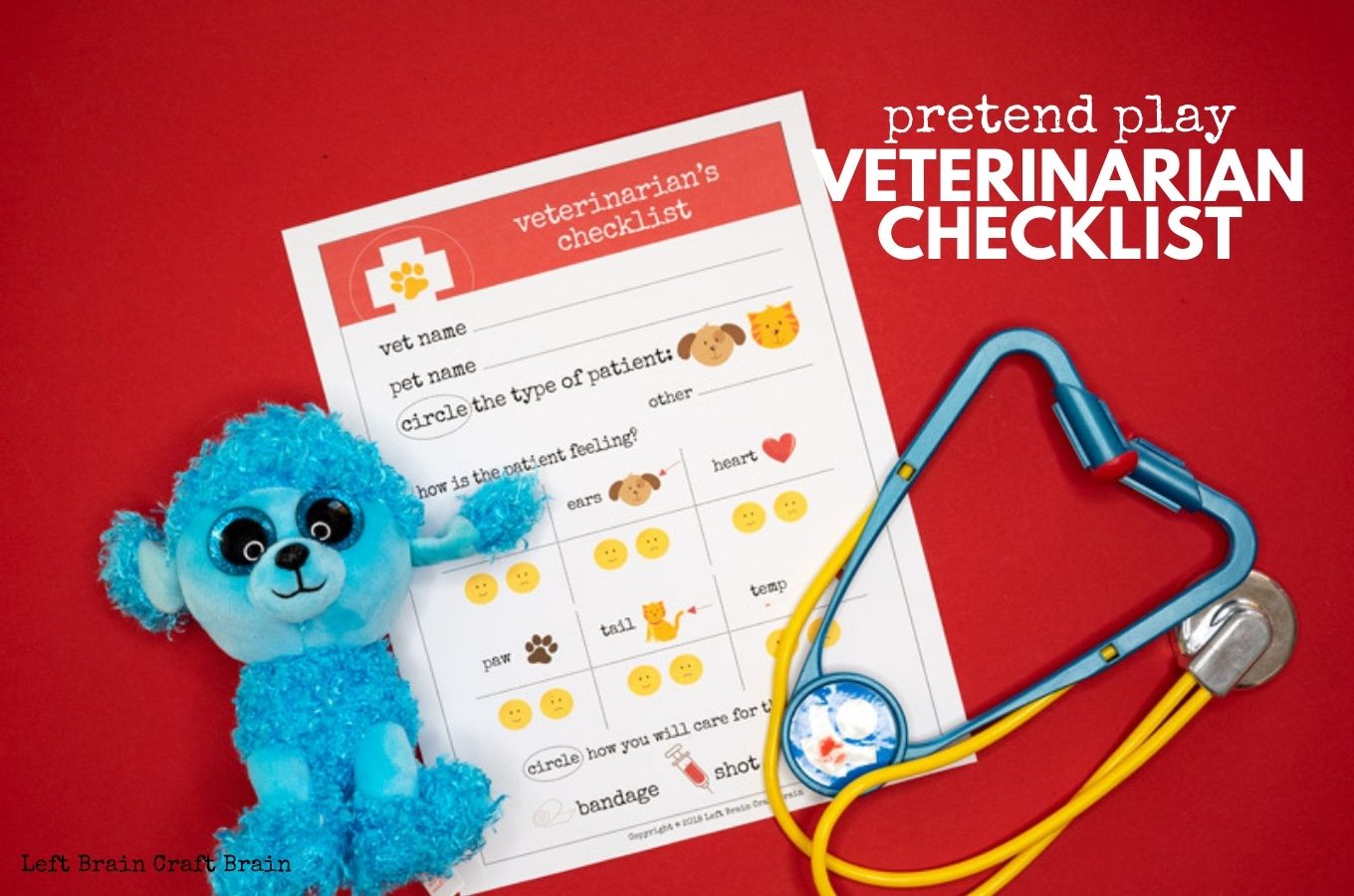
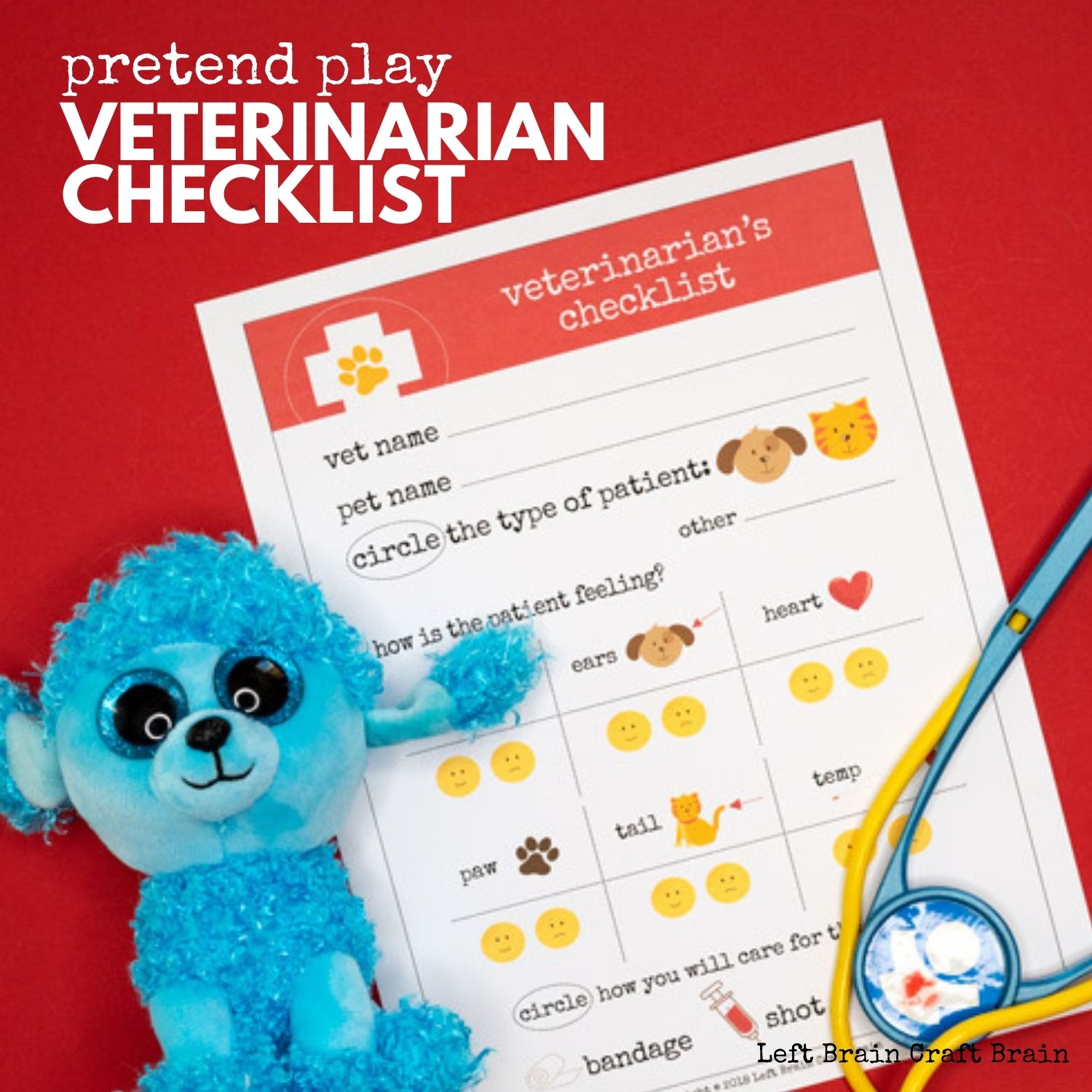
FREE! PRETEND PLAY
VETERINARIAN CHECKLIST
Role Playing types of Board Games
As kids get a little bit older and/or more advanced, role playing games are a great way to continue to ignite the creative juices. With help, even kids as young as 5 can play the cooperative game Forbidden Island and they get to pretend to take on a specific role. A few other games include:
Introduce dolls and stuffed friends
Especially for kids not in a classroom or pretending on their own, it’s nice to have the types of toys they can interact with. Children can pretend their toys are talking and participating alongside them in their adventures into space or their daring adventurers as a scientist into the wilderness. And this isn’t just a preschool thing. Older kids benefit from pretend play as they’re helping figure out what growing up is all about. We especially love American Girl for this because she’s headed to Mars…
Science Kits
Let kids put on a lab coat and goggles, and start creating. They can erupt volcanoes, dissect fake animals, and more. They can even try out different types of sciences like exploring electricity one day or internal medical the next. Here are some of my favorite STEM inspired kits.
And of course, there is my absolute favorite way to encourage science and engineering pretend play. Through hands-on experiments and projects.
Science, Tech, Engineering, Art, and Math Fun for Kids
Looking for some more STEAM inspiration that use can use right now? Instant gratification style? Check out STEAM Kids: 50+ Hands-on Science, Technology, Engineering, Art, & Math Hands-On Projects for Kids ebook! It’s packed full of a year’s worth fun learning activities that will wow the boredom right out of your kids.
Resources
- Golinkoff, Roberta M., et al. Play=Learning: How Play Motivates and Enhances Childrens Cognitive and Social-Emotional Growth. Oxford University Press, 2010.
- Kaufman, Scott Barry. “The Need for Pretend Play in Child Development.” The Creativity Post, www.creativitypost.com/education/the_need_for_pretend_play_in_child_development.
- Taylor, Marjorie. The Oxford Handbook of the Development of Imagination. Oxford University Press, 2013.
- Wolfgang, Charles H., et al. “Block Play Performance Among Preschoolers As a Predictor of Later School Achievement in Mathematics.” Journal of Research in Childhood Education, vol. 15, no. 2, 2001, pp. 173–180., doi:10.1080/02568540109594958.

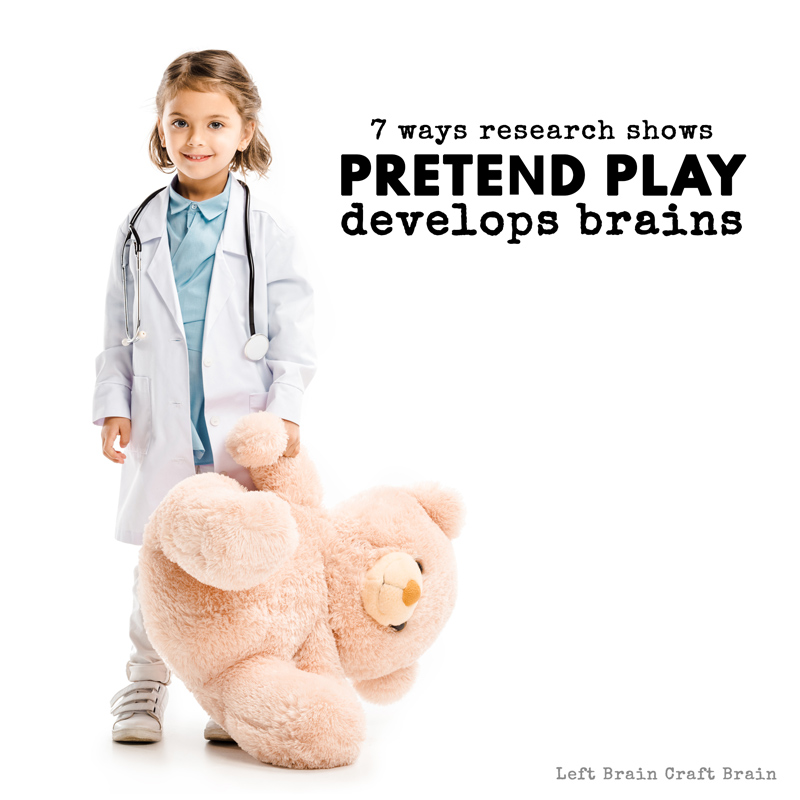
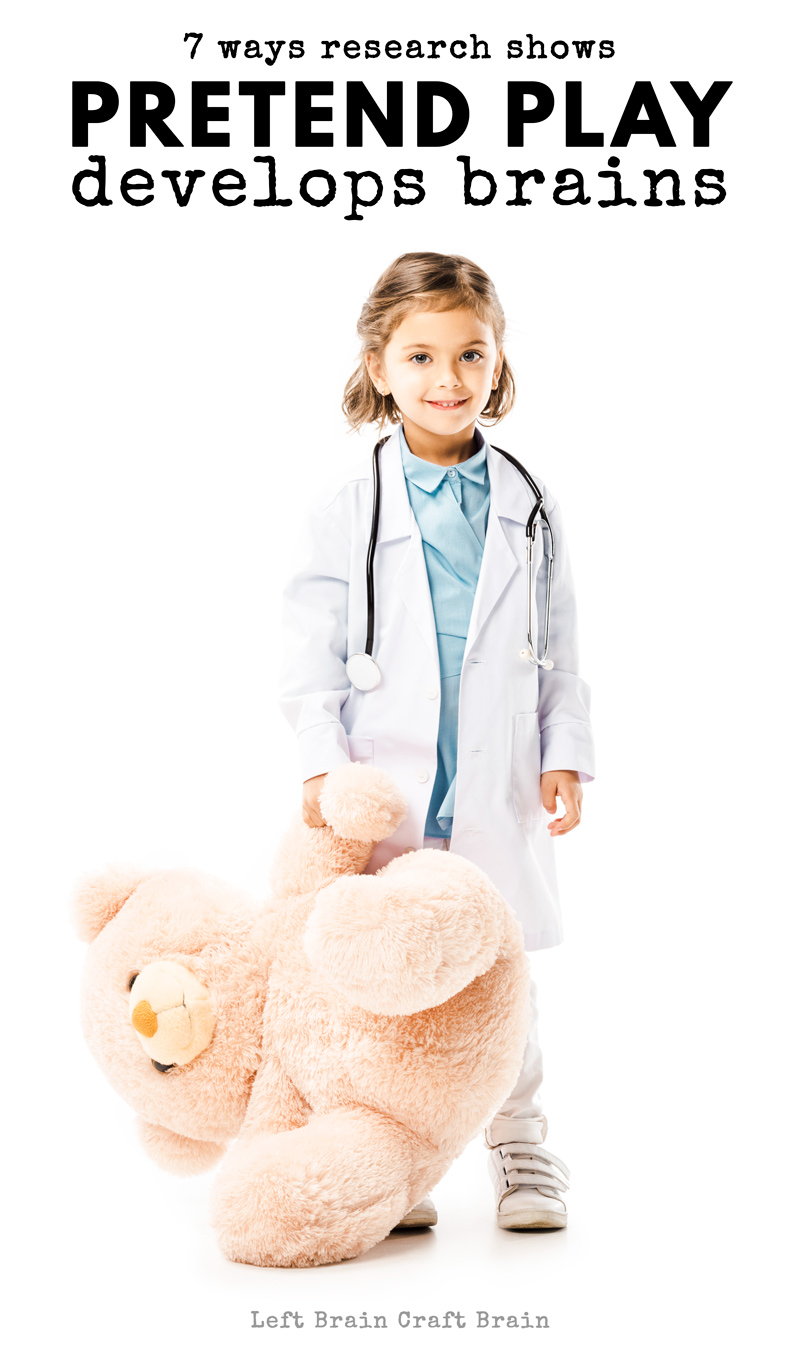
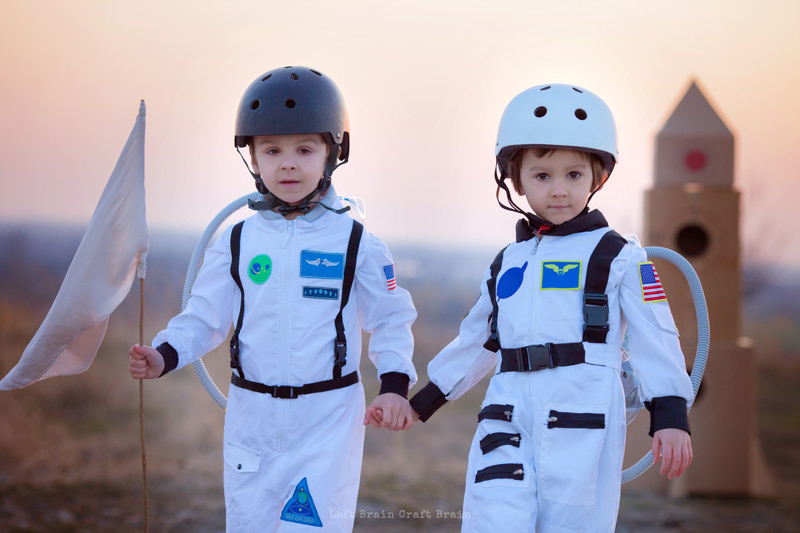
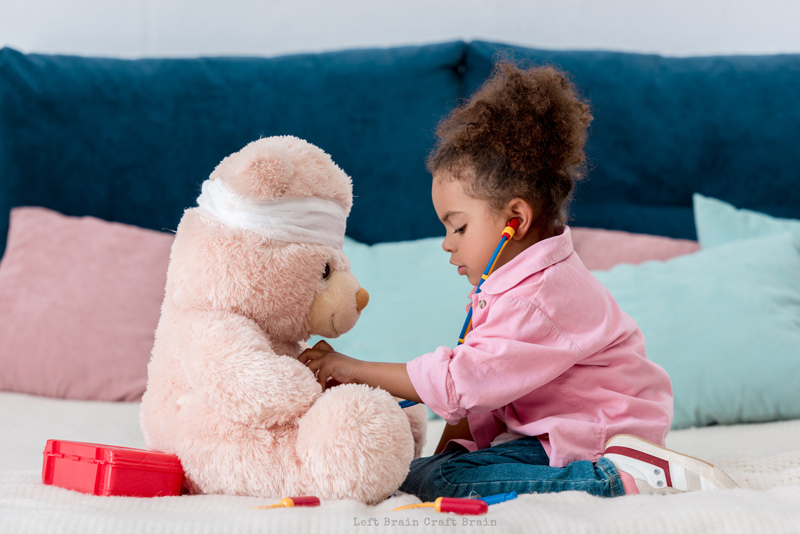
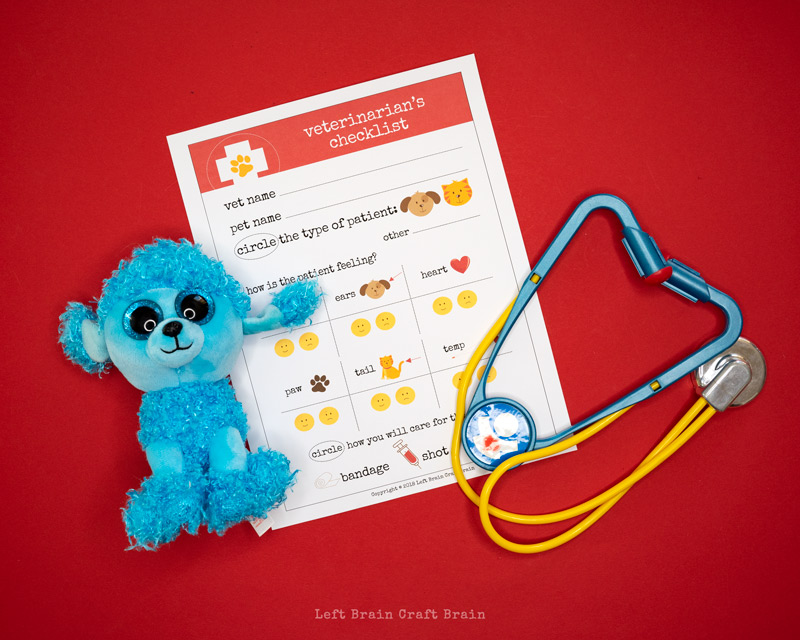
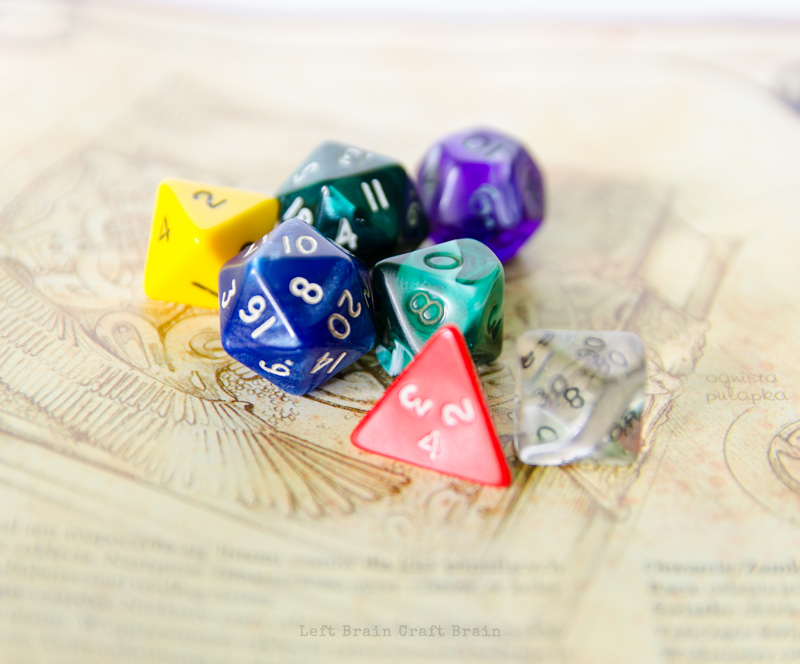

Pingback: 7 Ways Research Indicates Pretend Play is Vital for Brain Development • Little Genius International Kindergarten and Educational Center
Pingback: 5 Meaningful Ways to Connect with Kids While They’re Little - Left Brain Craft Brain